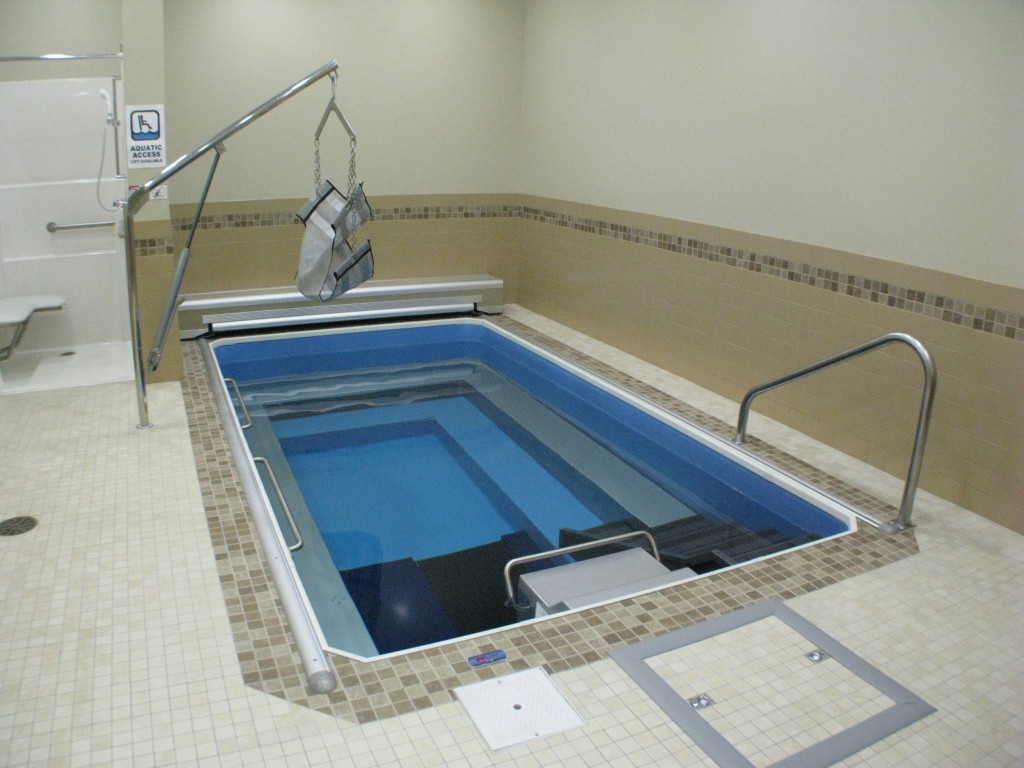Physical Properties of Water
- Buoyancy: As a patient is immersed in water, he or she weighs less than on land. An average person is unweighted approximately 50% in waist deep water and 75% in chest deep water. Depending on the patient’s height and the depth of water, exercises can be performed with very little strain on the joints, resulting in quicker rehabilitation and recovery.
- Hydrostatic Pressure: Water provides equal pressure on the body as it is immersed and continues to increase pressure at greater depths, resulting in decreased edema/swelling/pain. This property also aids in increasing range of motion when combined with exercises.
These properties allow for the benefits of aquatic therapy to be applied to a wide range
of conditions:
- Arthritis, post-operative patients (knee, hip, ankle, shoulder, etc), back pain, fibromyalgia, gait dysfunction, stroke, balance disorders, muscle weakness, capsulitis, pregnancy, and any condition that restricts the ability to exercise on land.
If aquatic therapy is recommended, the therapist will tailor an individualized aquatic program to meet your specific goals with an emphasis on returning to land based exercise as quickly as possible.
